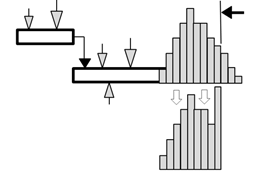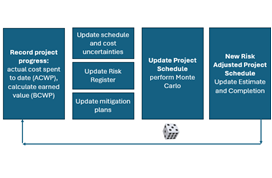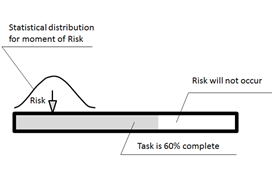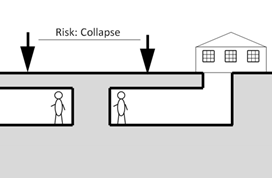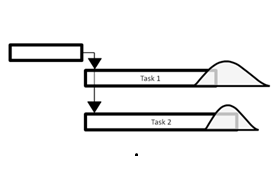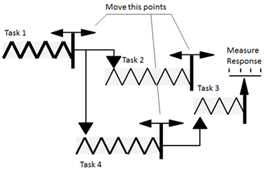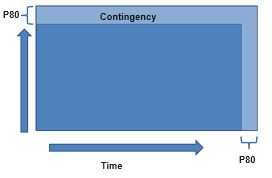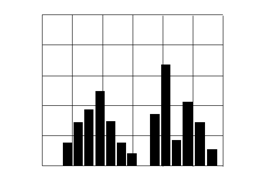May 16, 2025
Managing Risk in Project Portfolios: Lessons from Climbing Mount Everest
 When managing individual projects, performing a thorough risk analysis is standard practice. But what happens when those projects are part of a broader strategic initiative—a project portfolio? In these cases, risks must be assessed not only at the project level but also across the entire portfolio. This process is essential to ensure alignment with organizational goals, effective resource utilization, and strategic prioritization.
When managing individual projects, performing a thorough risk analysis is standard practice. But what happens when those projects are part of a broader strategic initiative—a project portfolio? In these cases, risks must be assessed not only at the project level but also across the entire portfolio. This process is essential to ensure alignment with organizational goals, effective resource utilization, and strategic prioritization.
April 7, 2025
Quantitative Analysis for Non-Schedule/Cost Risks
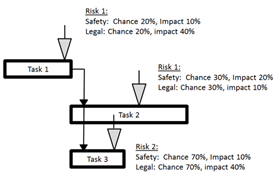 Risks can impact various aspects of a project, such as duration, scope, cost, income, safety, quality, and technology. Understanding and quantifying these risks can help project managers make informed decisions and mitigate potential issues. These risks can be analyzed using quantitative risk analysis techniques include Monte Carlo simulations.
Risks can impact various aspects of a project, such as duration, scope, cost, income, safety, quality, and technology. Understanding and quantifying these risks can help project managers make informed decisions and mitigate potential issues. These risks can be analyzed using quantitative risk analysis techniques include Monte Carlo simulations.
March 15, 2025
Understanding Non-Schedule Related Risks in Project Management
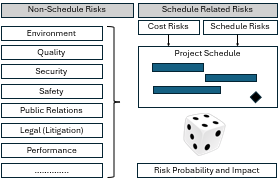 When we think about project risks, our minds often jump to schedule delays or cost overruns. However, there are numerous other risks that can impact a project, which are not directly related to the schedule or budget. These non-schedule related risks can be just as critical and need to be analyzed alongside traditional risks to ensure comprehensive risk management.
When we think about project risks, our minds often jump to schedule delays or cost overruns. However, there are numerous other risks that can impact a project, which are not directly related to the schedule or budget. These non-schedule related risks can be just as critical and need to be analyzed alongside traditional risks to ensure comprehensive risk management.
February 6, 2025
Joint Cost and Schedule Confidence Level (JCL) Analysis
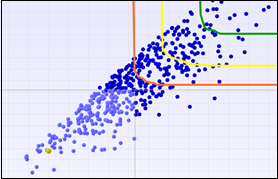 Joint Cost and Schedule Confidence Level (JCL) analysis is one of results of integrated cost and schedule Monte Carlo project risk analysis. During each iteration of a Monte Carlo simulation, the project cost, duration, and finish times are calculated. This information can be shown on a Joint Confidence chart. This chart makes it possible to visualize the chance that both cost and schedule objectives will be met.
Joint Cost and Schedule Confidence Level (JCL) analysis is one of results of integrated cost and schedule Monte Carlo project risk analysis. During each iteration of a Monte Carlo simulation, the project cost, duration, and finish times are calculated. This information can be shown on a Joint Confidence chart. This chart makes it possible to visualize the chance that both cost and schedule objectives will be met.
January 15, 2025
Probabilistic Cost and Cash Flow Analysis
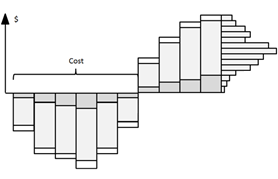 In project management, we usually complete our project with the final delivery of a product or service. Product marketing and sales is a separate project or operation. But in many cases, as part of risk analysis, it may be useful to analyze all phases of product development. It is very important for economic evaluation of oil and gas projects. Oil and gas producers must ensure that production is profitable given all uncertainties .
In project management, we usually complete our project with the final delivery of a product or service. Product marketing and sales is a separate project or operation. But in many cases, as part of risk analysis, it may be useful to analyze all phases of product development. It is very important for economic evaluation of oil and gas projects. Oil and gas producers must ensure that production is profitable given all uncertainties .
Nov 13, 2024
Decision Tree Analysis of Project Schedules
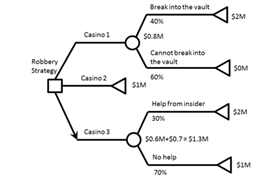 In project risk analysis, Decision Trees are a valuable tool as they clearly outline to decisions that are being evaluated and the results are easy to interpret. Decision Trees can be a useful tool to incorporate in your project risk analysis and decision making, By calculating expected values and considering uncertainties, Decision Trees help you to make informed choices that maximize benefits and minimize risks. In our next blog, we will discuss how to incorporate branching into your project decision analysis processes.
In project risk analysis, Decision Trees are a valuable tool as they clearly outline to decisions that are being evaluated and the results are easy to interpret. Decision Trees can be a useful tool to incorporate in your project risk analysis and decision making, By calculating expected values and considering uncertainties, Decision Trees help you to make informed choices that maximize benefits and minimize risks. In our next blog, we will discuss how to incorporate branching into your project decision analysis processes.
Oct 11, 2024
Probabilistic and Conditional Branching
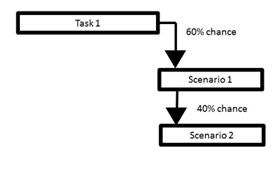 In project risk analysis, conditional and probabilistic branching are methods we can use to evaluate different scenarios and decision points that can occur during project execution. Conditional branching involves creating different project paths based on specific conditions or criteria, such as meeting a deadline or passing a test. Probabilistic branching uses probabilities to determine the likelihood of various outcomes, allowing project managers to anticipate and plan for different scenarios.
In project risk analysis, conditional and probabilistic branching are methods we can use to evaluate different scenarios and decision points that can occur during project execution. Conditional branching involves creating different project paths based on specific conditions or criteria, such as meeting a deadline or passing a test. Probabilistic branching uses probabilities to determine the likelihood of various outcomes, allowing project managers to anticipate and plan for different scenarios.
Sept 6, 2024
Probabilistic Work and Resource Allocation
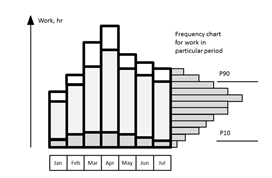 The Work in project scheduling the total amount of time scheduled on a task for all assigned resources. you may define uncertainties in duration and show the results as statistical distributions of both duration and work. Alternatively, you may define uncertainties in work or units. It is possible to define a distribution for both work and material resources assigned to the task. In addition, it is possible to define a statistical distribution for resource allocation units.
The Work in project scheduling the total amount of time scheduled on a task for all assigned resources. you may define uncertainties in duration and show the results as statistical distributions of both duration and work. Alternatively, you may define uncertainties in work or units. It is possible to define a distribution for both work and material resources assigned to the task. In addition, it is possible to define a statistical distribution for resource allocation units.
July 27, 2024
Project and Task Success Rates
Success rate is a chance that project or task is not canceled. For example, if task can be canceled for various reasons 45 times from 100. It means that task success rate equals 55%. Tasks can be cancelled for example, if a task reaches a task deadline, if deadline leads to cancelation of the task, a task reaches a project deadline, if deadline leads to cancelation of the task
Sept 6, 2024
Probabilistic Work and Resource Allocation
 The Work in project scheduling the total amount of time scheduled on a task for all assigned resources. you may define uncertainties in duration and show the results as statistical distributions of both duration and work. Alternatively, you may define uncertainties in work or units. It is possible to define a distribution for both work and material resources assigned to the task. In addition, it is possible to define a statistical distribution for resource allocation units.
The Work in project scheduling the total amount of time scheduled on a task for all assigned resources. you may define uncertainties in duration and show the results as statistical distributions of both duration and work. Alternatively, you may define uncertainties in work or units. It is possible to define a distribution for both work and material resources assigned to the task. In addition, it is possible to define a statistical distribution for resource allocation units.
July 27, 2024
Project and Task Success Rates
Success rate is a chance that project or task is not canceled. For example, if task can be canceled for various reasons 45 times from 100. It means that task success rate equals 55%. Tasks can be cancelled for example, if a task reaches a task deadline, if deadline leads to cancelation of the task, a task reaches a project deadline, if deadline leads to cancelation of the task
June 9, 2024
Deadlines with Risks and Uncertainties
Risk analysis helps to determine a task or a project success rate, which could be an important factor in making project decisions. Success Rates are the chance that a task or project can be completed. A task success rate of 56% means that there is a 56% chance that this task or project will be completed and 44% percent chance that task will be canceled. Let’s see how this works in a probabilistic analysis.
May 13, 2024
Risk-Driven EVM: Step-By-Step
Many organizations utilize an advanced framework for measuring project performance called Earned value management (EVM). EVM was first developed in the 1960s but became a practical methodology late in the last century when it was actively adopted by U.S. government agencies and in particular the U.S. Department of Defense. Here are the basic steps to integrate EVM/Project Risk Analysis Process
April 9, 2024
Forecasting Project Duration and Cost with Risk Events
During a project, we can recalculate the probability of occurrence and moment of the events using actual performance data. The analysis can be repeated to generate a new project schedule with updated costs and/or durations. But what should be done in cases where an activity is only partially complete, and it has risk events assigned to it?
March 21, 2024
Calculating Risk Probabilities and Impacts
What happens if the risk is assigned to multiple tasks? How to calculate risk probabilities, impacts, and score and ho to prioritize risks in this case? In addition to calculating probability and impact of individual risk events, we can rank event chains. To do this, we need to investigate if the event chain has been fully executed.
February 18, 2024
Risk Prioritization Using Monte Carlo Risk Analysis
Monte Carlo schedule risks analysis is used to calculate risk probabilities, impacts, and scores of the risks, assigned to the project schedule. This way the risks can be ranked and mitigated according to their actual impact on the schedule.
January 8, 2024
Critical Indexes
Critical indexes play a pivotal role in Monte Carlo risk analysis for project schedules because they provide crucial insights into the sensitivity and reliability of the schedule. The Critical Index is an indicator which shows how many times the task is on the critical path during a Monte Carlo simulation.
December 16, 2023
Sensitivity Analysis, Tornado and Scatter Plots
Project managers always want to know which task they should be most worried about, which tasks will could have the most impact on their project? The common method is to focus on those tasks on the critical path, however tasks that are not on the critical path may be impacted by risks and shift them in such a way that they impact project duration.
October 15, 2023
Managing Project Contingencies
In this blog, we will discuss project contingencies and how they can be developed from the results of the analysis. Project contingency (also referred to as margin or management reserve) is additional time or budget that can be added to the project plan to account for the possible variance from uncertainty and events and ensure that the project has a high probability of success.
September 14, 2023
Interpretation Results of the Project Risk Analysis
After you have run a Monte Carlo simulation, the unprocessed results are just a series of statistical distributions. To get any real value, we must understand what they mean. One of inherent problems with probabilistic calculations is that they go against our common sense. In real life, if we perform a task there is only one result, but Monte Carlo provides us with a whole range of results (distributions).
August 7, 2023
Event Chains and Execution of Response Plans
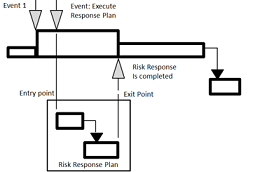 If an event or event chain occurs during a project, it may require risk response efforts. In some cases, risk response plans can be created. Risk response plans are an activity or group of activities (a small schedule) that augments the project schedule if a certain event occurs. However, in these cases, the project schedule may become very convoluted due to multiple conditional branches, which significantly complicates the analysis. Event chain methodology offers a solution: assign the risk response plan to an event or event chain.
If an event or event chain occurs during a project, it may require risk response efforts. In some cases, risk response plans can be created. Risk response plans are an activity or group of activities (a small schedule) that augments the project schedule if a certain event occurs. However, in these cases, the project schedule may become very convoluted due to multiple conditional branches, which significantly complicates the analysis. Event chain methodology offers a solution: assign the risk response plan to an event or event chain.
July 2, 2023
How to Use Event Chains
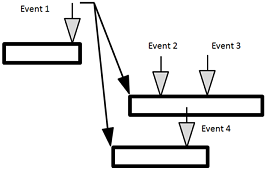 According to Event Chain Methodology event chains are series of risk related to each other. These chains may significantly affect the course of the project by creating a ripple effect through the project. In this blog we will discuss how event chain are calculated as part of Monte Carlo schedule risk analysis. For more information about events and event chain please visit our previous blog.
According to Event Chain Methodology event chains are series of risk related to each other. These chains may significantly affect the course of the project by creating a ripple effect through the project. In this blog we will discuss how event chain are calculated as part of Monte Carlo schedule risk analysis. For more information about events and event chain please visit our previous blog.
June 10, 2023
Types of Event Chains in Event Chain Methodology
 In Event Chain Methodology one event can trigger a whole chain of events. However, this scenario may not be always the case. There are several different types of event chains: risks could be independent, one risk triggers one or more risks, risks could be correlated, but do not act as triggers. Such event chain behave differently. For example one one event (Risk Sender) can triggers another event (Risk Receiver). If Risk Receiver occurs without this trigger, it would not affect the Risk Sender.
In Event Chain Methodology one event can trigger a whole chain of events. However, this scenario may not be always the case. There are several different types of event chains: risks could be independent, one risk triggers one or more risks, risks could be correlated, but do not act as triggers. Such event chain behave differently. For example one one event (Risk Sender) can triggers another event (Risk Receiver). If Risk Receiver occurs without this trigger, it would not affect the Risk Sender.
January 10, 2023
Visual Tools for Probabilistic Business Problems
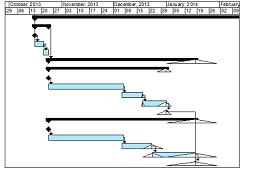 A number of diagrams are used for project decision and risk analysis. Among them are decision trees, strategy tables, cause-and-effect diagrams, force-field diagrams, mind maps, and various flow charts. All these diagrams are intended to simply our understanding of the system, which is in our case is projects with uncertainties. Uncertainties associated with project variables, relationships between uncertain variables and result of analysis, as well as calculation algorithms can be displayed using these diagrams.
A number of diagrams are used for project decision and risk analysis. Among them are decision trees, strategy tables, cause-and-effect diagrams, force-field diagrams, mind maps, and various flow charts. All these diagrams are intended to simply our understanding of the system, which is in our case is projects with uncertainties. Uncertainties associated with project variables, relationships between uncertain variables and result of analysis, as well as calculation algorithms can be displayed using these diagrams.
November 26, 2022
Modeling Risk Dependencies with Event Chains
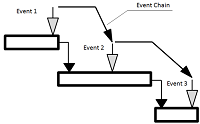 Some events can cause other events, which can cause yet more events. These series of events form event chains, which may significantly affect the course of the project by creating a ripple effect through the project. In this blog, we will try and answer why you might consider using them as part of your project risks processes.
Some events can cause other events, which can cause yet more events. These series of events form event chains, which may significantly affect the course of the project by creating a ripple effect through the project. In this blog, we will try and answer why you might consider using them as part of your project risks processes.
September 12, 2022
Are You Going to Meet Project Deadline?
Event chain methodology can be used during the project planning stage and during project execution to measure the chance that project deadlines will be met. We can monitor and show the chance that a project will meet a specific deadline. This chance can change constantly as a result of the impact various risks and event chains. In most cases, this chance decreases over time: however; risk response and mitigation plans can increase the chance of successfully meeting a project deadline.
August 3, 2022
Statistical Distributions for Project Risk Analysis
In project risk analysis, statistical distributions are an integral component of how we model both uncertainties and risk impacts, and are often misunderstood by the uninitiated. So let’s take a look at how we use statistical distributions to model probability.
June 17, 2022
Dashboards for RiskyProject Analysis
As the saying goes, “pictures are worth a 1000 words”, and therefore dashboards with clear graphics and charts are one of the most effective ways to communicate the results of your risk analysis. To address this, one of the most significant changes in the new version of RiskyProject is the new reporting capabilities offered by the customizable Project and Risk dashboards. The key modifier is the last sentence is “customizable” as the previous versions dashboards were hard-coded. Therefore, while these dashboards provided the “essential” information, they did not have the flexibility to capture the wide range of metrics and visualizations that are available for quantitative and qualitative risk analysis and management. In addition to providing flexibility, the new dashboards allow anyone to create their own reports.
March 14, 2022
Risk Management Strategies
Before landing in US federal jail for 150 years, Bernard Lawrence “Bernie” Madoff was a successful investor. On December 2008, it was discovered that the asset management unit of Bernard L. Madoff Investment Securities LLC was a massive Ponzi scheme, which cost investors billions of dollars. So, when Madoff was planning his scheme, he probably was considering how he would conceal his ill-gotten gains. This concealment was essentially risk management strategy related to the risk “Ponzi scheme is discovered”.
February 6, 2022
Prioritization of Projects
Why should we prioritize projects? Here are three important reasons. First of all, projects may require additional resources, which require immediate attention. Also project priority can be used to calculate the risk score for the project. Finally, risk ranking in an enterprise risk register depends on the priority of project to which this risk is assigned. Projects with higher priority will be given a higher weighting when calculating the risk impact.
December 29, 2021
Seeds and Linear Congruence for Monte Carlo Simulations
In this blog, we will look at one mechanisms that are used in RiskyProject to randomize the values generated for Monte Carlo simulation. RiskyProject software will only generate a random number only once when you first assign a statistical distribution to the task or resource parameter. This number is recorded and is used as a starting point of the calculation. This random number is called the seed. After the seed is generated, the next value for the second iteration of Monte Carlo process is generated as a function of the seed.
November 1, 2021
Risk Matrix Phenomenon
 We are going to look briefly at a phenomena that can occur when using a risk matrix to prioritize your risks when performing quantitative risk analysis. There is an intrinsic limitation to risk matrixes that can occur that under certain conditions incorrectly prioritize risks.
We are going to look briefly at a phenomena that can occur when using a risk matrix to prioritize your risks when performing quantitative risk analysis. There is an intrinsic limitation to risk matrixes that can occur that under certain conditions incorrectly prioritize risks.
September 23, 2021
Ranking Risks which Belong to Different Categories
 Remember Indiana Jones movie? What is more important for Indiana Jones, spend an extra couple of minutes to fight a dangerous villain or have a non-injury accident? In other words, what category is more important: Duration or Safety? It is a very common problem in project risk analysis. One risk can belong to different categories. In RiskyProject we use methodology derived from Analytical Hierarchy Process to determine priorities for different risk categories: Duration, Cost, Environment, Safety, Security, Technology, etc.
Remember Indiana Jones movie? What is more important for Indiana Jones, spend an extra couple of minutes to fight a dangerous villain or have a non-injury accident? In other words, what category is more important: Duration or Safety? It is a very common problem in project risk analysis. One risk can belong to different categories. In RiskyProject we use methodology derived from Analytical Hierarchy Process to determine priorities for different risk categories: Duration, Cost, Environment, Safety, Security, Technology, etc.
August 13, 2021
How to Define Risk Probabilities and Impacts
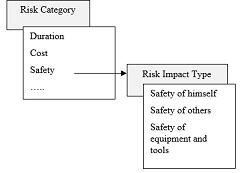 Once you have identified your risks, to help manage your risks, you need gather additional information about the risk. It is easy to think of this information as answering the question “Who, What, When, Where and How. Let’s use one of Hollywood’s most know risk takers Indiana Jones. In this case we can imagine that Indiana Jones is on another mission to recover an ancient artifact and has the risk “Unwanted encounter with the Maniacal Nazi Scientist”. Here is how he might define the risk in a risk register.
Once you have identified your risks, to help manage your risks, you need gather additional information about the risk. It is easy to think of this information as answering the question “Who, What, When, Where and How. Let’s use one of Hollywood’s most know risk takers Indiana Jones. In this case we can imagine that Indiana Jones is on another mission to recover an ancient artifact and has the risk “Unwanted encounter with the Maniacal Nazi Scientist”. Here is how he might define the risk in a risk register.
June 26, 2021
About Risk Properties
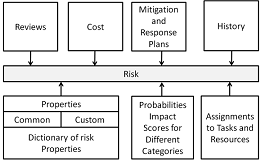 Capturing details or properties about risks is important for management of the current project, but also lessons learned. Here is a real life example on how risk properties are used. On November 4th, 1979 students seized the US Embassy in Tehran, Iran along with 52 hostages. In response, US President Jimmy Carter ordered Operation Eagle Claw (or Operation Evening Light or Operation Rice Bowl) in an attempt to release the diplomats held captive at the embassy of the United States in Iran. The operation took place 24 April 1980.
Capturing details or properties about risks is important for management of the current project, but also lessons learned. Here is a real life example on how risk properties are used. On November 4th, 1979 students seized the US Embassy in Tehran, Iran along with 52 hostages. In response, US President Jimmy Carter ordered Operation Eagle Claw (or Operation Evening Light or Operation Rice Bowl) in an attempt to release the diplomats held captive at the embassy of the United States in Iran. The operation took place 24 April 1980.
May 4, 2021
Why You Must Prioritize Your Risks
You must deal with constrained resources (budget, time, etc.) and it would be impossible to completely mitigate all of your risks. The solution is to prioritize your risks to determine which are the most important, so that given your limited resources you can minimize your risks in the most cost-effective manner possible.
March 23, 2021
Hierarchical Risk Registers
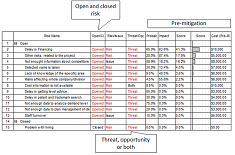 People often think of risk registers as very simple: name, id, owner, probability and impacts, and little more. In reality, risk registers are usually much more complex and support the recording and tracking of many types of information. Organizations can decide what needs to be included in the risk register and in what order. Risk registers can be based on risk status or categories and presented in a hierarchical format. These hierarchies are also referred to as Risk Breakdown Structures (RBS).
People often think of risk registers as very simple: name, id, owner, probability and impacts, and little more. In reality, risk registers are usually much more complex and support the recording and tracking of many types of information. Organizations can decide what needs to be included in the risk register and in what order. Risk registers can be based on risk status or categories and presented in a hierarchical format. These hierarchies are also referred to as Risk Breakdown Structures (RBS).
February 8, 2021
Modeling Uncertainties in Weather
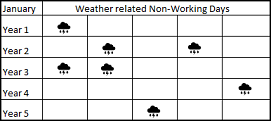 Here is a common scheduling issue. Offshore oil drilling in Gulf of Mexico can be affected by bad weather and in particular, hurricanes. In the case of hurricanes, drilling is shut down and crews are evacuated to an onshore location. While the severity of hurricanes can vary the impact is still largely the same (shutdown, evacuation, startup) so the main issue is what is the probability that a hurricane will occur. So how do we model this risk?
Here is a common scheduling issue. Offshore oil drilling in Gulf of Mexico can be affected by bad weather and in particular, hurricanes. In the case of hurricanes, drilling is shut down and crews are evacuated to an onshore location. While the severity of hurricanes can vary the impact is still largely the same (shutdown, evacuation, startup) so the main issue is what is the probability that a hurricane will occur. So how do we model this risk?
December 21, 2020
Optimism Bias and The Psychology of Risk Mitigation
Here is an interesting phenomenon: in most cases people can identify risks, but don’t put much effort into managing them. This is a common situation in project management: project managers create elaborate risk registers, but their efforts mostly end there. They don’t use it for its most important function: to prioritize and manage the risks, Why is this the norm?
November 16, 2020
Risk Assessments: Eliciting Judgement
 Psychologists found that identifying probabilities can be accurate as long as information is properly elicited. Essentially, the accuracy of the judgement depends on how questions are framed. If you have a strategic or a complex project, we recommend the use of risk workshops with a moderator who is an expert in judgment elicitation. Effective judgement elicitation techniques help to perform high quality project risk assessment.
Psychologists found that identifying probabilities can be accurate as long as information is properly elicited. Essentially, the accuracy of the judgement depends on how questions are framed. If you have a strategic or a complex project, we recommend the use of risk workshops with a moderator who is an expert in judgment elicitation. Effective judgement elicitation techniques help to perform high quality project risk assessment.
October 13, 2020
Registry of Mitigation and Response Plans
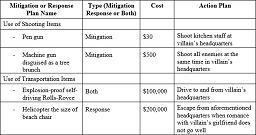 In the same manner as risks, mitigation plans can be stored in the registry. Why do we need it? In many projects, one mitigation plan can be used to mitigate many risks. The same is true for risk response plans. It is much easies to keep all mitigation and response plans for projects and for portfolio of projects in one depository.
In the same manner as risks, mitigation plans can be stored in the registry. Why do we need it? In many projects, one mitigation plan can be used to mitigate many risks. The same is true for risk response plans. It is much easies to keep all mitigation and response plans for projects and for portfolio of projects in one depository.
September 18, 2016
How to Identify Critical Risks
 The goal of risk analysis is to identify critical risks: those risks that have the most potential to positively or negatively impact your project objectives. Identifying critical risks is a process of prioritization and this an output of qualitative or quantitative risk analysis. Risk prioritization facilitates project decisions, particularly with regards to risk mitigation and response planning. There are a number of tools which can help with risk prioritization, particularly the risk register and the risk matrix.
The goal of risk analysis is to identify critical risks: those risks that have the most potential to positively or negatively impact your project objectives. Identifying critical risks is a process of prioritization and this an output of qualitative or quantitative risk analysis. Risk prioritization facilitates project decisions, particularly with regards to risk mitigation and response planning. There are a number of tools which can help with risk prioritization, particularly the risk register and the risk matrix.
August 26, 2020
Risk Identification: Group Integration Techniques
 A number of techniques can be used for risk identification: consensus, Delphi, dialectic, interviewing, dictatorship, decision conferencing, and different brainstorming methods. These methods help to improve quality of risk identification process.
A number of techniques can be used for risk identification: consensus, Delphi, dialectic, interviewing, dictatorship, decision conferencing, and different brainstorming methods. These methods help to improve quality of risk identification process.
July 16, 2020
Risk Reviews, History Logs, and Audits
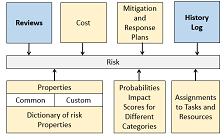 Risks in complex projects require constant monitoring because all information about the risks, including probability and impact may change during the course of a project. It is important that information about the actual status of risks is not ignored and slips through the cracks. Most changes occur as result of performance management: different management decisions or actual performance can cause the probability of some risks to change, risk owners can change, some risks may be closed, mitigation or response plans may be updated.
Risks in complex projects require constant monitoring because all information about the risks, including probability and impact may change during the course of a project. It is important that information about the actual status of risks is not ignored and slips through the cracks. Most changes occur as result of performance management: different management decisions or actual performance can cause the probability of some risks to change, risk owners can change, some risks may be closed, mitigation or response plans may be updated.
May 29, 2020
Cost risk analysis
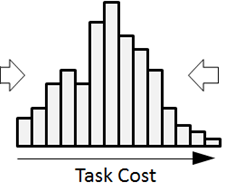 Project cost risk analysis determines chance that project will be completed on budget given uncertainties related to cost. It works together with schedule risk analysis as part of integrated process and utilizes Monte Carlo simulations of project schedules. Project cost risk analysis also helps to determine critical risks affecting project cost, as well as calculate probabilistic cash flow. Result of project cost risk analysis are presented using cost histograms for statistical distribution of task and project cost, cumulative project cost charts or probabilistic cash flow charts.
Project cost risk analysis determines chance that project will be completed on budget given uncertainties related to cost. It works together with schedule risk analysis as part of integrated process and utilizes Monte Carlo simulations of project schedules. Project cost risk analysis also helps to determine critical risks affecting project cost, as well as calculate probabilistic cash flow. Result of project cost risk analysis are presented using cost histograms for statistical distribution of task and project cost, cumulative project cost charts or probabilistic cash flow charts.
May 14, 2020
Probabilistic Branching in New Product Development Projects
 Forecasting how long it will take to get a new product to market is difficult at best, but when developing products for highly regulated markets such as pharmaceuticals and medical devices strict testing regime can add additional risk and uncertainty. For example, US Food and Drug Administration (FDA) mandates multi-phase approval process for validation of safety, efficacy, and efficiency of new drug and vaccines. The possible impact of testing regimes on the cost and time required for successful product development can be modeled using Probabilistic Branching in combination with Monte Carlo simulations.
Forecasting how long it will take to get a new product to market is difficult at best, but when developing products for highly regulated markets such as pharmaceuticals and medical devices strict testing regime can add additional risk and uncertainty. For example, US Food and Drug Administration (FDA) mandates multi-phase approval process for validation of safety, efficacy, and efficiency of new drug and vaccines. The possible impact of testing regimes on the cost and time required for successful product development can be modeled using Probabilistic Branching in combination with Monte Carlo simulations.
April 20, 2020
Risk Matrix and How to Use It
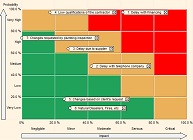 A risk matrix is a project management tool that allows a single page – quick view of the probable risks evaluated in terms of the severity or impact or risk and likelihood or probability of the risk plotted the x and y axis. Risk matrix usually has cells associated with different ranges of probability and impact. Risk matrix may include arrows, which represent probability and impact of risk after mitigation.
A risk matrix is a project management tool that allows a single page – quick view of the probable risks evaluated in terms of the severity or impact or risk and likelihood or probability of the risk plotted the x and y axis. Risk matrix usually has cells associated with different ranges of probability and impact. Risk matrix may include arrows, which represent probability and impact of risk after mitigation.
April 3, 2020
Diagramming Tools for Risk Identification
 A number of diagramming techniques are used for risk identification. All these tools can be used as part of risk identification workshop where moderators enter information about risks during discussion and present it to the experts. This can be performed with specialized software of simply paper and pen.
A number of diagramming techniques are used for risk identification. All these tools can be used as part of risk identification workshop where moderators enter information about risks during discussion and present it to the experts. This can be performed with specialized software of simply paper and pen.
March 17, 2020
Analysis of Risk Mitigation and Risk Response Scenarios
Risk mitigation and risk response in projects can be done different ways. Scenario analysis is the useful tool to evaluate different risk mitigation and risk response options. The analysis can be performed by Monte Carlo simulation of project schedules with different sets mitigation and response activities.
February 25, 2020
Lean Scheduling and Risk Management
Lean scheduling is a process aimed to minimize waste in the workplace to maximize value. It is widely used in construction projects. Schedules define each task for the project team and how long it should take to complete each one. Read practical recommendation, how risk management and risk analysis can be used to improve lean scheduling in project management.
January 31, 2020
Risk Visibility and Approval Rules
Each project portfolio usually has Risk visibility rules. These rules define how risks will be visible when they are first entered in the portfolio. For example, when risk is first added to the register, visibility settings are portfolio level, for all summary projects, immediate summary project, or current project.
December 7, 2019
Probabilistic resource leveling
Probabilistic resource leveling is resource leveling with taking into an account risks and uncertainties associated with project schedule. It can be done using Monte Carlo simulations. There are different ways how probabilistic resource leveling can be performed. In some cases probabilistic resource leveling can give useful and accurate results. In other cases it can be confusing.
November 20, 2019
Project Risk Impact for Different Risk Categories
Each risk can affect project duration, cost, quality, safety, security, technology, public relations, etc. These are the different risk categories. Impact of the risks on different categories can be different. The article shows how to calculate impact of the risk on different categories and prioritize such risks.
October 27, 2019
How Many Monte Carlo Simulations Are Required
Some people believe that if they increase number of iterations in Monte Carlo simulation, they will have much more accurate results. But remember that the accuracy of results depends on the accuracy of input data or in our case, how we define statistical distributions for task cost, duration and other parameters.
September 4, 2019
Role of the PMO in Project Risk Management
The Project Management Office (PMO) provides risk management governance over the project portfolio to ensure that risks are managed consistently and aligns with the organizations objectives.
August 8, 2019
Qualitative Risk Analysis for IT and Software Development Projects
IT Projects experience more risk than most other types of projects, a phenomenon that suggests that IT project managers would be wise to manage and hopefully minimize project risks. Now that we have made the case that if you are the PM of a IT project you need to manage risk, here is a brief overview of how you can quickly put one in place.
July 12, 2019
Risk Analysis of Linear Projects
Linear projects or location based projects are usually construction projects, such as pipelines, buildings, and roads. In addition to standard scheduling data (start/finish times, duration, resources, and costs) each activity has location data. Time location charts could be presented for original project schedule and risks-adjusted project schedule. Risk adjusted project schedule is a result of project risk analysis
June 10, 2019
Risk Scores
To increase the accuracy and validity of the risk scores and ranking, RiskyProject calculates risk scores based on their measured impact on defined project parameters such as duration or costs. Risk probability and impacts to cost and schedule assigned to project activities and resources. So, in addition to the estimates for probability and impacts, the calculation also takes into account estimates for task durations, costs, and resource allocation.
May 6, 2019
Project Risk Identification
What could possibly happen to my project? If you are a project manager or member of a project team, this question has probably crossed you mind on many occasions and it is a key to project success. When you ask this question, you are identifying risks that could happen during your project, which is the first step in managing your project risks. This step is called “Risk Identification” just asking what could happen is a good way to start, there are several methodologies you can use to improve your ability to identify project risks.
April 17, 2019
Project Risk Resilience
Project risk resilience is an ability of project to meet its objectives on time and on budget with all risks, which may affect the project. To achieve it you need to define risk strategy: to mitigate, transfer, avoid or accept risks.
March 31, 2019
Project Risk Events or Project Uncertainties: What is the Difference?
Normally when we model project risks we use:
- Risk events, which affect tasks or resources. These risk events may increase or reduce task duration, cost, start and finish times, work, lags and other task parameters. Risk events are defined by probabilities and impacts.
- Uncertainties in task duration, cost, start and finish times, rates, work and other parameters; they are expressed as statistical distributions.
February 18, 2019
Visualization of Project Risks and Uncertainties
January 11, 2019
Managing Risks in Large Projects
Managing risk is inherent to managing projects. In fact, managing project risk could be considered the single most important aspect of project management as all projects have risks and uncertainties that can are the underlying causes of missed deadlines and cost overruns. While all projects face these obstacles, large projects are especially vulnerable due to complexity. As projects grow in scope, they also experience an almost exponential growth in complexity and a concurrent growth in an exposure to risk events and uncertainties and can result in out of control costs and schedule and project failure. It is therefore critical that additional risk management strategies are put in place to give your team the best chance to be successful.
December 8, 2018
Project Risk Analysis for Oil and Gas Projects
Project cost and schedule risk analysis is an important process in the management of energy portfolios. Capital cost represents about 40 of all costs in the portfolios. Risks can significantly increase costs due to project delays and other cost escalations. Cost escalations of more than 30% are common and especially prevalent in new plays where developers have less experience with local conditions. The impact of risks on exploration projects is even higher; therefore, it is extremely important to identify and manage critical risks as part of cost control measures.
November 4, 2018
Enterprise Risk Management vs. Project Risk Management
If you are a history buff like myself, you have probably come across the following statement, “Tactics win battles, but strategies win wars” or something to that effect. While I often find that martial analogies tend to be overused in discussions on project management, but I do think it is applicable when the topic is Enterprise Risk Management . Like an army, companies must adopt specific tactics to ensure the success of specific battles (projects), but at the same time support the underlying capabilities of the army (company) through high level planning and execution of strategies to ensure they win the war, or in the case of companies, remain profitable.
October 24, 2018
Project Risk Management Software Features
Here is an overview of mandatory and nice to have risk management software features. There are a number of specific features related to project management, particularly schedule and cost project risk analysis, which makes project risk management different from enterprise risk management.
September 21, 2018
Project Risk Analysis Templates
Project risk analysis templates outline the recommended information that should be captured as part of project risk analysis. They include Risk Breakdown Structure Templates and Risk Properties Templates. In many cases project risk register templates are easy to use and at the same time are very useful tools for project risk management and project risk analysis.
August 31, 2018
Risk Events vs. Uncertainties in Project Risk Analysis
As part of the risk management plan, you usually identify risks events affecting duration, cost and other parameters, include them to the risk register, assign them to task and resources and perform Monte Carlo simulation of project schedules. To the casual observer, it seems quite straight forward that if you have a well-defined risk plan and do a high quality risk analysis you have managed all of your risk. But the problem with this process is that it only incudes risk events and these only represent a slice of project risk often called “epistemic”. Epistemic risk is characterized by probability and impact and further is manageable, that is, the impact of these risks on your project can be reduced or eliminated through good management. However, there is another source of uncertainties that cannot be managed or reduced referred to as “aleatory”. Aleatory uncertainties refer to the inherent variance that occurs in all processes.
July 26, 2018
Risk Management Plan
A well-defined Risk Management Plan is the cornerstone of any risk management process and is key to overall quality of your project management. Risk management plans and risk analysis are two components of project risk management process. The Risk Management Plan is the core document that describes how risk management will be performed on a project. Risk analysis or the assessment of the risks is a defined methodology that is used to analyze risks that impact a project.
July 18, 2018
EVM and Project Risk Analysis
A question that we are often asked is how does project risk analysis (PRA) compare or relate to earned value management (EVM)? It often goes further, if I am doing EVM, is there a need for risk analysis, or is it redundant? In this case, while there is a little overlap, risk analysis and earned value are complementary practices as part of an integrated project/program management process. This begs the question, how do the two complement each other. First, let’s define earned value and project risk analysis.
July 3, 2018
Value of Project Risk Analysis
Many project managers are woundering if there is any value in project risk analysis. Project risk analysis takes effort, requires experienced personnel with specialize knowledge and requires risk analysis software. But does it provide benefits, namely reduction of project duration, cost reduction, efficient resource allocation and others? We believe that value of project risk analysis is in risk prioritization or determining what risks can be mitigated first, analysis of efficiency of mitigation plans and calculating their cost and duration, and analysis of risks as part of project control and just-in-time execution of project risks.
May 28, 2018
Availability Bias in Project Management
Availability bias is a mental shortcut according to which people are making assessment of probability of certain events not based how often such events occurred, but how often do they come to mind. In project management it affects project estimations and risk assessment.
May 17, 2018
Sensitivity Analysis
Sensitivity analysis is the quantitative risk assessment of how changes in a specific model variable impacts the output of the model. It is also a key result of Monte Carlo simulations of project schedules. Often referred to as a Tornado chart, sensitivity analysis shows which task variables (Cost, Start and Finish Times, Duration, etc) have the greatest impact on project parameters. In projects, we are looking at how uncertainties and risks assigned to specific activities correlate with variance in the project. For example, sensitivity analysis allows you to identify which task’s duration with uncertainty has the strongest correlation with the finish time of the project.
April 30, 2018
Adaptive project management and project control
Adaptive project management is a project management technique that includes generation of multiple hypotheses, modelling and execution some of them, and performing project control to determine if hypotheses and overall strategies are correct.
April 17, 2018
Project Risk Assessment
Project risk assessment is a process of identification, classification, and quantitative and qualitative analysis of risks affecting projects. Risk assessment is a combination of two processes: identification and scoring with the goal of prioritizing and ensuring that sufficient resources are allocated to each risk in accordance with the threat or opportunity that it represents to a project.
March 20, 2018
Project Control and Risk Management
Project controls is a process of gathering and analyzing current project performance to forecast and manage potential project cost and schedule outcomes. This analysis process commonly includes both Earned Value (EV) and quantitative risk analysis to produce forecasts. EV is a widely used methodology that uses past performance as the basis to produce deterministic project forecasts. The assumption is that past performance will predict the future. However, this is often not the case as different phases of a project may have different levels of risk and uncertainties.
February 22, 2018
Project Risk Score
Project risk scores are an indicator, which show the level of project risk exposure. It is used to compare, prioritize and manage projects in your project portfolio. With project risk scores, we can identify those projects which could have the greatest impact on your ability to successfully execute the projects in your portfolio. Project risk score calculation based on qualitative or quantitative project risk analysis.
February 13, 2018
Project Portfolio Risk Analysis
A majority of projects are managed not in isolation but as part of a project portfolio or program. Managing risks in project portfolios bring some new challenges including:
- How risks are shared between projects
- How to rank a project within a portfolio based on risk exposure
- How to change project priorities based on risk exposure
- How to reallocate resources within a portfolio as a response to risk
- How to perform risk mitigation, if risk is shared between different projects within a portfolio
February 9, 2018
Weather Calendars for Project Risk Analysis
Many projects have uncertainties with respect to the weather. Certain operations cannot be performed in bad weather. In construction and with oil & gas projects, weather is in fact one of the greatest risks. Weather uncertainties can be modeled in different ways. One of the most common methods of modeling weather uncertainty is a weather calendar. This method can give you accurate results as long as you have historical data: how many non-working days this or a similar project experienced in the previous year.
February 4, 2018
What are the benefits of project risk analysis?
“How do I convince my team that this is worth the effort?” is one of the frequently asked questions that we run across during our discussions with project teams and it is a good question that deserves an answer. Project risk analysis is not without cost, it takes time and effort to develop the culture, processes and tools to perform effectively and often, while the time and cost required is self-evident, the benefits can often be difficult to discern and the ones that are most important are often not the most obvious.
January 25, 2018
Project Contingency Planning and Risk Analysis
Determining and managing project contingency buffer or project margin or reserve is one of the critical steps of project scheduling and project control. Most schedulers include a certain margin or buffer in the original schedule to ensure that the project is completed on time in case of delays. The same margin can be applied to the project cost. The question is how much is this buffer supposed to be? Is it 20% of the total project duration? Maybe it is a fixed number of days or months? The answer depends on what risk events can occur during the course of the project. Some research and development projects can be very risky and require a longer buffer while other projects may have a relatively small buffer. Quantitative project risk analysis can help to determine and control a project buffer.
January 12, 2018
Agile Project Management and Quantitative Analysis
Quantitative risk analysis is a valuable component of the project risk management process for any project managed by traditional methods, for example, in the construction industry. What about projects managed by agile methods, for example in software development? Agile approach has a number of principles. Some of these principles are directly related to project scheduling and risk management:
- The project is performed iteratively where the next iteration is planned based on results of previous iteration.
- The project plan is defined on a high level usually as a set of sequential iterations with their deliverables.
- Detailed Risk register with probabilities and impact often are not explicitly defined; instead there is a backlog of issues which need to be resolved in each iteration.
We believe that even for agile project management quantitative risk analysis would be a valuable project planning tool.
January 8, 2018
Mexican Vacations and Value of Qualitative Risk Analysis
Is there any value in qualitative risk analysis or is it just a burden? Qualitative risk ananlysis is mostly a mental exercise. Risk identification, assessment of risk probabilities and impact makes you think about about three main questions:
- What can happen?
- How will it impact what i’m doing?
- What do I do about it?
People make wrong choices simply because they don’t ask themselves these questions or if they do, they don’t allocate adequate mental effort in to thinking through these questions. For example, people tend to forget something or are overoptimistic in assessing future risks. The value of formal qualitative risk analysis is to help people to understand the implications of what they are going.
December 15, 2017
Taxation and Adaptive Project Management
The US government is currently in the process of changing the federal tax framework. There is a lot of discussion about the content of these changes, how it will affect business environments, personal finances, and government departments. The bottom line is that taxation is a complex issue and that nobody will know its exact impacts until it is actually implemented and in place for some time. For example, the new tax bill is will reduce corporate taxes in an attempt to increase economic growth. What is unknown is how companies will employ this additional revenue. Will they reinvest it in US economy or just pay dividends to shareholders of which a significant portion of them are outside the US? Our opinion is that tax regulation, as well as many other complex government regulations should be implemented based on Adaptive Project Management principles.
December 14, 2017
Uncertainties in Project Risk Analysis
“Pirates of the Caribbean: On Stranger Tides” by Disney released in May 2011 is the most expensive movie in history at a cost of $410.6 million. Despite the significant cost, the movie was profitable with revenue over $1,054 million worldwide, half of which went to movie theatres. According to financial statements, this huge cost was not due to overspending. The largest cost were incurred paying actors and production staff, Johnny Depp received $55 million. Movie production is a creative process with a very large number of uncertainties that can affect the movie budget and completion date of the project. A few risk events combined, can result in massive cost overruns.



